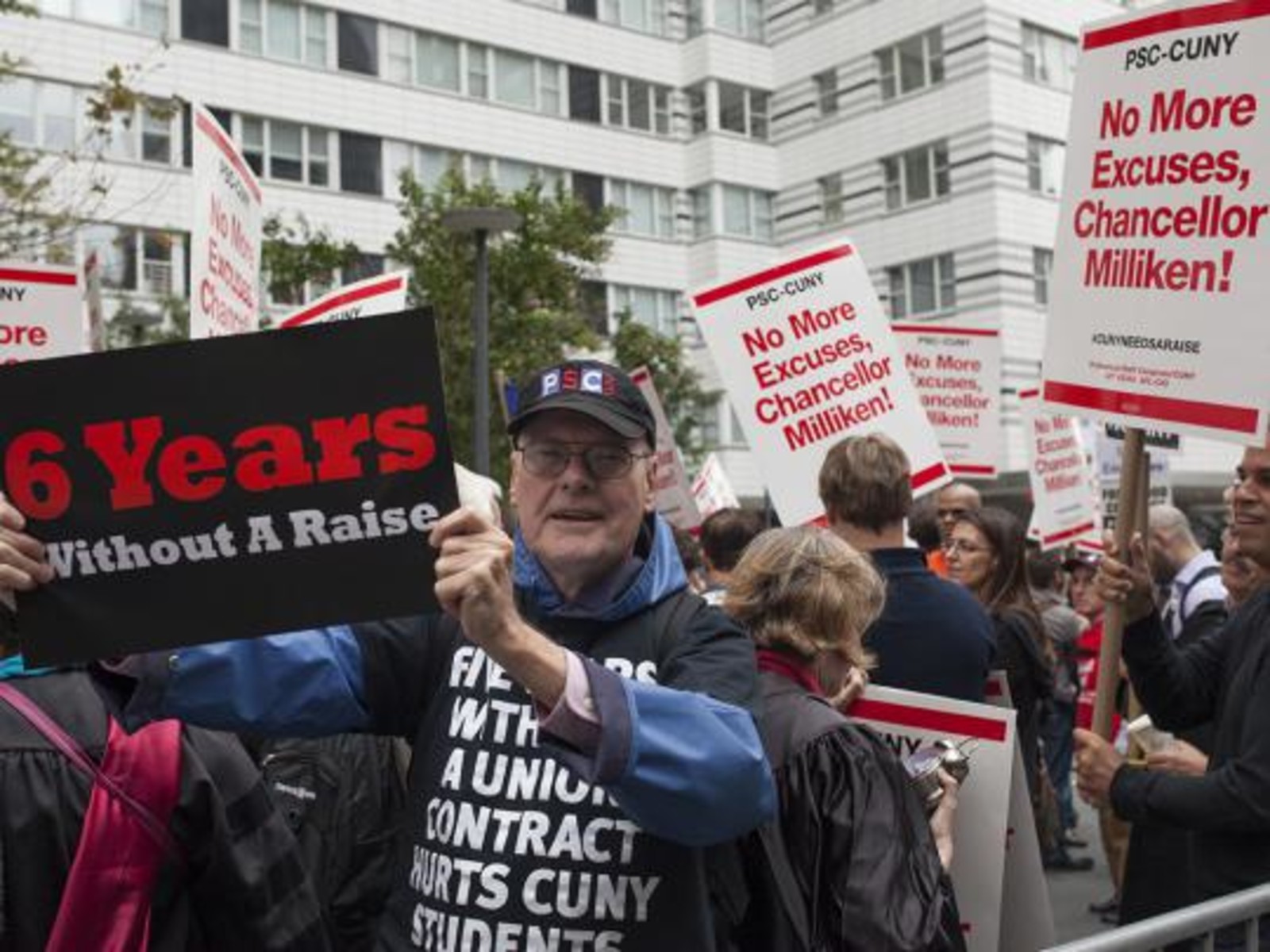College counselor: Use—and abuse—of underpaid adjuncts

In this week's column, I would like to ask readers who are considering which colleges to apply to, to also consider another issue in the world of higher education: the persistent abuse of academic labor.
As I write this, in New York City, members of CUNY (City University of New York) faculty and staff are staging a Nov. 4 protest against their low wages and lack of contract. Right now, there are 7,600 full-time CUNY faculty members earning salaries significantly lower than those at comparable area universities, according to the Professional Staff Conference/CUNY, the union which represents CUNY faculty and staff. Working without a contract for six years, these teachers are prone to "poaching" by other schools, and that would be a big loss to our students. This is not only a New York City problem.
More than half of CUNY's courses are taught by 13,000 low-wage, part-time adjunct faculty. The use—and over-use—of part-time teachers occurs not just at CUNY, but at many schools. Each year, thousands of promising teachers are driven by practical consideration—as well as heartbreak and anger—from academia. These are the adjunct, or part-time, or "contingent" faculty at colleges and universities. They cannot afford to teach under the abusive conditions imposed by their institutions.
Unwittingly, those who attend college and those who pay for it are enabling academic labor abuse on a national scale. There is much talk today about the increasing selectivity of colleges, and the increasing cost of attending them. There is far less talk, unfortunately, about this other, often hidden, aspect of higher education.
The fall semester is the time when colleges send recruiters to high schools to woo applicants. However, the working conditions of teachers is a topic these recruiters do not address. If asked pointedly, they may not tell the truth. Usually, those who admit students and those who hire those students' teachers have nothing to do with one another. Their offices have separate goals. Often, particularly at smaller schools, faculty and administration do work together for the benefit of the students, but those are the exceptions.
The exploitation of adjunct faculty is a significant, national labor issue that has moral and academic implications. This is a statement with sweeping implications, and not made lightly. While I will not, at this point, name specific schools, the information about them is not secret. But you have to search for it. Do you think College X wants to advertise the fact that despite charging $63,000 for a year's tuition, it hires 50 percent of its teachers on a part-time basis? Or that the bulk of undergraduate courses are taught by poorly-compensated adjunct faculty, while the administrators make hefty salaries?
The best source of facts is the Common Data Set (CDS), a statistical compilation made by each college or university, usually by that school's office of institutional research. Some schools are very upfront about their CDS information; some make it extremely hard to find. The CDS gives the same information, in the same order: how many students there are, how many applied, how many were admitted, how many denied; their ethnic and gender makeup; the graduation rate, and so forth. In the faculty section, you can learn how many full-time and part-time teachers there are; how many are male, how many are female, their ethnicity, and how many have the highest degree possible in their areas of specialization. The math is straightforward: addition and percentages.
You can learn that part-time teachers account for between 4 and 72 percent of an institution's faculty. Those are the extremes. But at many schools, adjunct faculty account for 40 to 50 percent of the teaching staff. When you consider which colleges your children will apply to, consider also who will be teaching them!
Please Post Comments